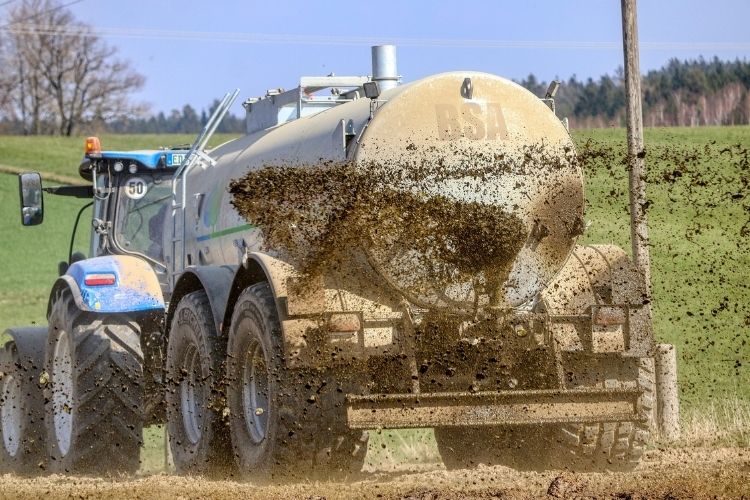In comparison to the chemical fertilizers, I also discussed the merits and demerits of organic fertilizers.
And finally, about many kinds of nitrogen-rich fertilizers too, I had shared the informations with you.
I will tell you about Phosphorus-rich and Potassium-rich organic fertilizers and if time permits, I will also tell you about some specialized organic fertilizers.
So, first of all, let us start with a phosphorus-rich organic fertilizer.
That is, a fertilizer which has, in comparison to nitrogen and potassium, more amounts of phosphorus available.
Phosphorus is such a primary nutrition which is required by the plants after nitrogen in highest amount.
Phosphorus is needed by the plants from their germination through to maturity stage.
Besides being an important part of DNA and RNA of the plants, phosphorus is also a participant in many other activities, such as photosynthesis, respiration, energy storage, energy transportation, cell division, etc.
Due to phosphorus, the root development in plants take place properly, the stalks and branches of plants become stronger, they produce in large amounts, the flowers, fruits and seeds, flowers, fruits and seeds are able to mature at time and their overall quality is improved.
Thus, phosphorus keeps on providing energy to the plants during the whole life cycle.
Instead of being so important for the growth of plants, most of the soils have phosphorus in lesser amount.
Besides this, if the pH value of soil is less than 5.5, or greater than 7, then instead of phosphorus being available in the soil, plants are unable to take the same.
Thus, before using phosphorus-rich fertilizer, checking the pH value of soil is always better.
If the pH value doesn’t lie within 5.5 and 7, then applying phosphorus-rich fertilizer will impart no benefits to the plants.
So, if the soil pH is above 7, i.e., the soil is of alkaline nature, then to reduce the value of pH, first apply nitrogen-rich fertilizer to the soil or add a little amount of Sulfur to the soil and then after a few weeks, use phosphorus-rich fertilizer.
In second condition, when the soil pH is less than 5.5, then by reducing the acidity the pH should be increased.
For this, add either wood-ash or Calcium Hydroxide, i.e., lime in little amount and after that phosphorus-rich fertilizer should be used.
Friends, normally, all kind of plants need phosphorus, but those producing flowers, fruits and seeds in higher amounts need phosphorus in higher amounts.

So, let us discuss about some phosphorus-rich organic fertilizers, the first one being the Bone-meal.
As it is clear with the name, bone-meal is an organic mixture made of animal bones that contains Phosphorus and Calcium in sufficient amounts, It has 12% to 16% of Phosphorus and 18% to 24% of Calcium.
It doesn’t contain potassium, but sometimes the traces of nitrogen may be available.
Bone-meal has a specialty that the form in which it contains the phosphorus, can be easily taken up by the plants.
That means, by using bone-meal the deficiency of phosphorus can be overcome very quickly.
In a 10″ to 12″ pot, it can be added in amount of 30 to 40 grams.
After applying bone-meal to soil, it should be mixed well with the soil, so that birds or animals do not get attracted by its smell.
Since it keeps on releasing phosphorus slowly for long time, therefore, repeat its appliction only at least after four months.
If you are transplaning a seedling, or, repotting a plant, then also before doing that you can apply bone-meal to the soil.
All kind of bulb-plants, succulents, citrus plants, and other flowering and fruiting plants can be applied with bone-meal.
Green and leafy vegetables need more nitrogen than phosphorus, therefore, bone-meal is not required to be applied there.
Friends, among the phosphorus-rich organic fertilizers, the highly used next important fertilizer is PROM, that is Phosphorus rich organic manure.
It is also called Green chemistry phosphatic fertilizer.
You can get it in the market by different brand names.
I purchased one with the name BIO-ZYME of 2 Kg pack of the PROM fertilizer for about INR 250.00 PROM fertilizer is available in granular form which exactly look like DAP.
It is made basically by mixing two type of things and co-composting them.
The first one is the naturally occurring Rock Phosphate in finly powdered form and the second type of things which is composted with
Rock Phosphate powder, are different kind of organic manures, such as compost, vermicompost, cow-dung, kitchen waste etc.
Before this, only Rock-Phosphate was used as an organic substitute of phosphorus.
But the phosphorus present in Rock Phosphate is not readily available to the plants.
Due to this, the rock-phosphate had to be mixed in the soil before 2 to 3 months.
But, the phosphorus available in PROM fertilizer is readily available to the plants and besides phosphorus, it also contains the nutrients present in the organic manure.
These days, as a substitute of phosphorus-rich chemical fertilizer, i.e., DAP and SSP, PROM fertilizer is being used successfully.
Most of the people who are vegetarian, avoid using bone-meal, can use PROM fertilizer in place of bone-meal without hesitation.
A little amount of its granuels, i.e.,1/2 to 1 tablespoonful can be mixed to the soil of a 10 to 12 inch pot.
It need not be used repeatedly.
In one year, it should not be used more than twice.
You can apply it while preparing soil for seasonal plants, or near the root-ball of the plant during transplanting a plant in the potting mix.
So friends, I told you about the two main organic sources of phosphorus-rich organic fertilizers.
And now is the turn of talking about potassium-rich organic fertilizers.
The mostly used macro nutrient by the plants after Nitrogen and Phosphorus , the one at number three is Potassium.
Although, Potassium doesn’t participate in building up any part of the plant, but it activates almost eighty types of growth related plant-enzymes and increases the ability of plants to regulate the use of water.
This brings improvements in plants and the yield of the plants, i.e., size, shape, color and tastes of the flowers, fruits and seeds; increases immunity towards the diseases and pest attacks; increases plants ability to withstand extreme cold and hot climatic conditions and also increases tolerance to drought.
This means to say that potassium improves all kinds of quality of the plants and for this reason, potassium is often known also as the quality element.
Due to deficiency of potassium, there is a wilting in the edges of the leaves, a curling in the top edges and yellowing in the middle part of the leaves.
Besides this, the roots stop developing, plants show stunted growth and the quality of fruits and seeds decreases.
Normally, all kind of plants need potassium at every stage of growth, but one that produces flowers, fruits and seeds, need extra potassium starting from the production of flowers through to the maturity of fruits or seeds.
So, let me tell you about some of the potassium-rich organic fertilizers.
Friends, in my list of potassium-rich organic fertilizers, the first one is seaweed extract.
It is also known as the Kelp extract, or Kelp fertilizer.
I use one from IFFCO brand, named as Sagarika.
There are different brands of seaweed extract easily available in the market.
Besides liquid, it is also available in granular form.
Seaweeds are about more than 12,000 different variety of algae found in the sea which is not only used as human food, medicines, herbs and as cosmetics, but also as the plant fertilizers.
It contains nitrogen upto 1%, phosphorus up to 1/2% and potassium up to 2% including more than 70 types of minerals, vitamins, enzymes and hormones.
That means, it is a complete fertilizer which is totally safe and fully organic.
At a rate of 2 to 3 ml of it, diluted with one liter of water, spray over the plants and also add to the soil.
You can repeat it at an interval of 3 to 4 weeks.
Although this fertilizer doesn’t have high percentage of nitrogen, phosphorus and potassium, but due to the presence of many other nutrients, it can be applied starting from the initial growth of the plants through to the maturity of plants, that is at every stage, can be applied successfully.
